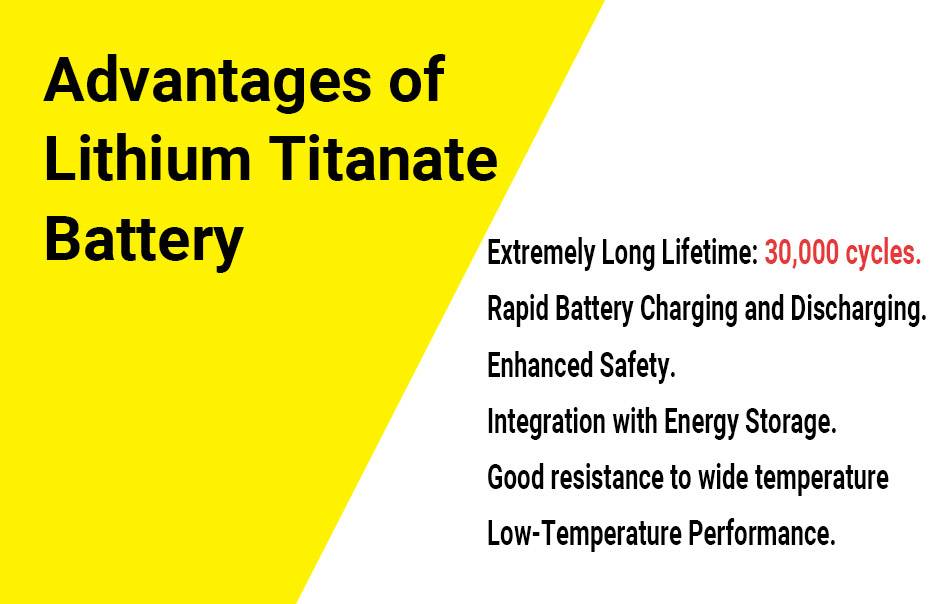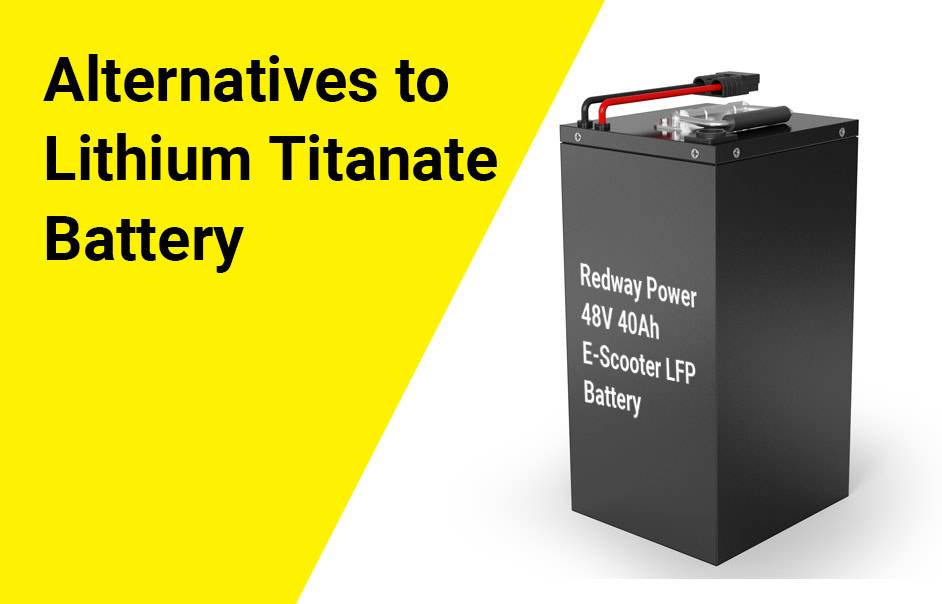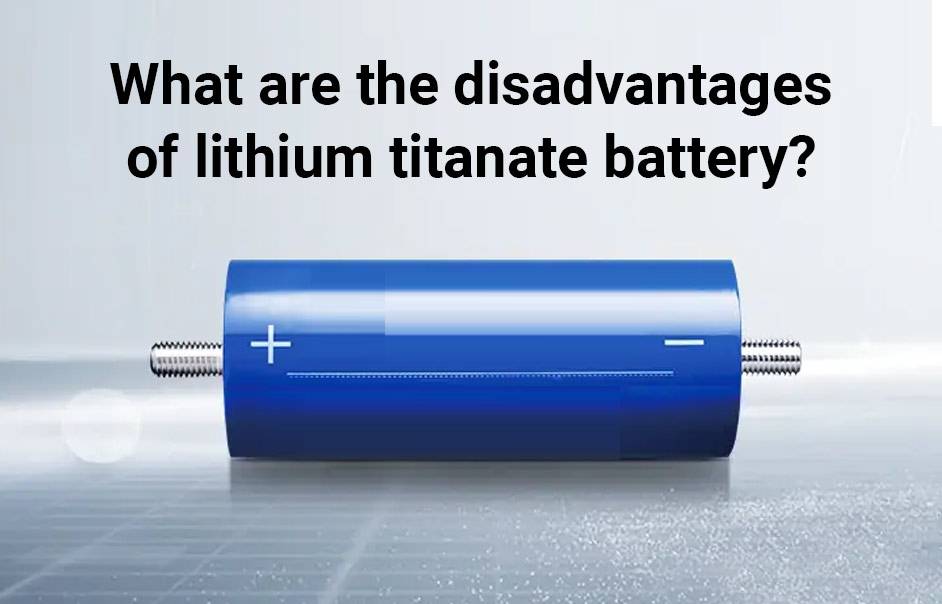In the quest for efficient and sustainable energy sources, lithium titanate batteries have emerged as a promising option. While they offer benefits like longer lifespan and improved safety, they also come with drawbacks. In this blog post, we’ll explore the disadvantages of lithium titanate batteries and look at alternative energy solutions. Let’s uncover the potential limitations of this intriguing battery technology!
Advantages of Lithium Titanate Battery
Lithium titanate batteries, or LTO batteries, are rechargeable batteries prized for their numerous advantages:

- Long Lifespan (30000 cycles): LTO batteries can endure thousands of cycles without significant performance decline, making them perfect for applications requiring longevity.
- High Power Capability: These batteries excel at delivering high currents and supporting rapid charging and discharging, making them ideal for electric vehicles and high-power devices.
- Wide Operating Temperature Range: LTO batteries operate effectively in extreme temperatures from -30°C to 55°C, making them suitable for use in challenging environments.
- Excellent Safety Characteristics: They have a low risk of thermal runaway or explosion due to their stable chemistry, ensuring safety in various applications.
- No “Memory Effect”: Unlike some older rechargeable batteries, LTO batteries do not suffer from memory effects, allowing users to recharge them without needing full discharge.
Disadvantages of Lithium Titanate Battery
While lithium titanate batteries offer unique advantages for energy storage, they also have notable drawbacks to consider:
- High Cost and Limited Availability: These batteries are expensive due to complex manufacturing processes and raw material scarcity, making them less accessible for some applications.
- Lower Energy Density: Compared to other battery types, lithium titanate batteries store less energy, limiting their suitability for high-capacity applications that require prolonged power supply.
- Slow Charging Speed: Charging lithium titanate batteries takes longer due to their low voltage limitation, which may not be ideal for applications requiring quick power replenishment.
- Limited Performance in High-Output Scenarios: They may not be suitable for high-performance applications needing rapid energy delivery due to their lower discharge rate.
Despite these limitations, lithium titanate batteries remain valuable for their long lifespan and enhanced safety features. However, alternatives like lithium-ion or nickel-metal hydride batteries may better suit certain needs depending on cost, performance, and safety considerations.
High Cost and Limited Availability
Lithium titanate batteries face significant challenges due to their expense and restricted availability:
- Cost Factor: Lithium titanate batteries are costly to produce because of their intricate manufacturing process and the use of rare materials like titanium oxide. As a result, they are more expensive compared to other battery options, making them less feasible for budget-conscious consumers.
- Limited Production Scale: These batteries are relatively new in the market and aren’t produced on a large scale like other battery types. The limited availability makes it challenging for consumers to find them easily, both in physical stores and online markets.
- Accessibility Issues: Due to their restricted availability, it can be frustrating for individuals or businesses requiring immediate access to lithium titanate batteries. Finding these batteries may prove difficult, hindering their adoption in various applications.
However, ongoing advancements in production techniques and increasing demand may lead to improvements in both cost and availability in the future. Manufacturers are actively exploring ways to enhance production efficiency and reduce expenses associated with lithium titanate batteries, offering hope for broader accessibility and affordability.
Lower Energy Density
Lithium titanate batteries suffer from a significant drawback: lower energy density compared to other battery types. This means they can’t store as much energy in a given volume or weight, leading to shorter battery life and reduced performance.
- Comparison with Lithium-ion Batteries: Lithium titanate batteries have notably lower energy density than lithium-ion batteries commonly used in electronics and electric vehicles. This limitation affects their overall performance and range, particularly in electric vehicles, where shorter driving distances between charges are observed.
- Impact on Charging Frequency: The lower energy density of lithium titanate batteries may necessitate more frequent charging, which can inconvenience users who rely on sustained battery power. This limitation is particularly relevant for applications where extended battery life is crucial, such as portable electronics or remote work scenarios.
Despite these drawbacks, ongoing research aims to improve the energy storage capacity of lithium titanate batteries, potentially mitigating these limitations in the future. Understanding these limitations is essential for evaluating the suitability of lithium titanate batteries for specific applications.
Slow Charging Speeds
One notable drawback of lithium titanate batteries is their slow charging speeds compared to other battery types. This limitation stems from their unique chemistry, resulting in lower voltage ranges and higher internal resistance, which slows down charge transfer rates.
- Chemical Composition: Lithium titanate batteries’ chemistry leads to slower charge transfer rates, requiring more time to reach full charge compared to other batteries.
- Applications Affected: This slow charging speed may not be suitable for applications requiring rapid recharging or immediate power, such as electric vehicles or devices needing quick energy replenishment.
Despite this limitation, ongoing research aims to improve lithium titanate batteries’ charging speeds through various techniques like modifying electrode materials and optimizing cell designs, promising enhanced performance in the future.
Not Suitable for High-Performance Applications
While lithium titanate batteries offer safety and long cycle life, they face limitations in high-performance tasks due to their lower energy density and slower charging speeds compared to other lithium-ion batteries.
- Limited Power Output: Lithium titanate batteries struggle to deliver high power output required for demanding applications, like electric vehicles or power tools, due to their lower energy density.
- Slow Charging Speeds: Their slower charging rates can be a disadvantage in scenarios where rapid recharging is necessary, impacting the usability of high-performance devices or vehicles.
- Higher Cost and Limited Availability: Lithium titanate batteries tend to be more expensive and less accessible than other options, affecting their cost-effectiveness in high-performance applications.
Alternatives to Lithium Titanate Battery
Several alternatives exist to address the limitations of lithium titanate batteries, offering varying advantages and suitability for different applications.

- Lithium Iron Phosphate (LiFePO4) Batteries: These batteries provide a longer lifespan, higher energy density, and improved safety features compared to lithium titanate batteries, making them suitable for various applications.
- Nickel-Metal Hydride (NiMH) Batteries: While less energy-dense than lithium-ion batteries, NiMH batteries are cost-effective and readily available, suitable for low-power applications.
- Solid-State Batteries: Emerging as a promising technology, solid-state batteries offer enhanced safety and potentially higher energy density by using solid electrolytes.
- Supercapacitors: Although not batteries, supercapacitors deliver high power output and rapid charging, ideal for applications requiring quick bursts of power.
Consider the specific requirements of your application, such as energy density, cost, and safety, when selecting an alternative to lithium titanate batteries. Each option has its own advantages and drawbacks to weigh against your needs.

